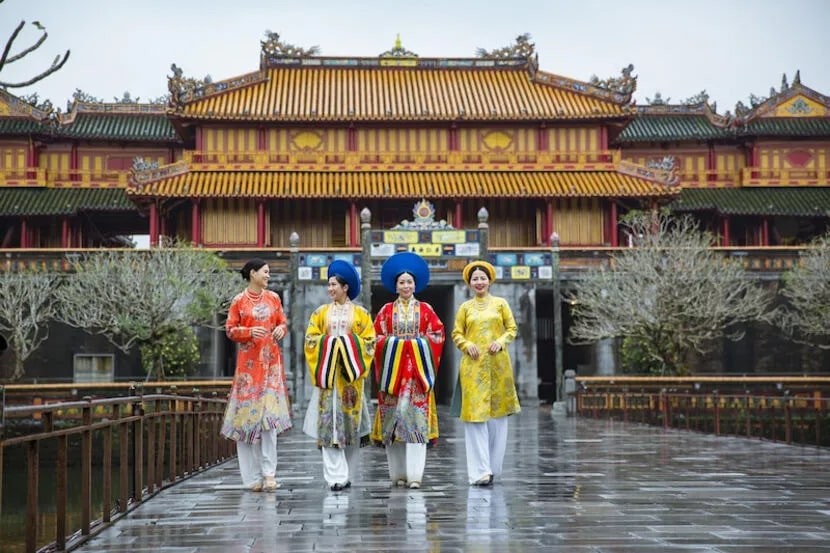Top 10 Best Halloween Movies to Watch on HBO Max, Hulu, Disney+ For A Spooky Night
From mid-September to late October, some of us just can’t get enough of the Halloween season. With a pumpkin-spice latte in hand and chili in the Crock-Pot, it’s a time for marathoning spooky movies, candy, costumes, and sharing tales of the macabre.
Take a break from planning a last-minute Halloween costume to focus on what's really important: enjoying a spooky movie. If you're looking for the best Halloween movies to stream on HBO Max, Netflix, Disney+, Hulu, and more, look no further. Whether you really want to scream or you just want to be nostalgic for the days of trick or treating, the streaming platforms have Halloween content for everyone, if you know where to look.
Here is the best movies to watch on HBO Max, Hulu, Disney+ and more.
1. Halloween (1978)
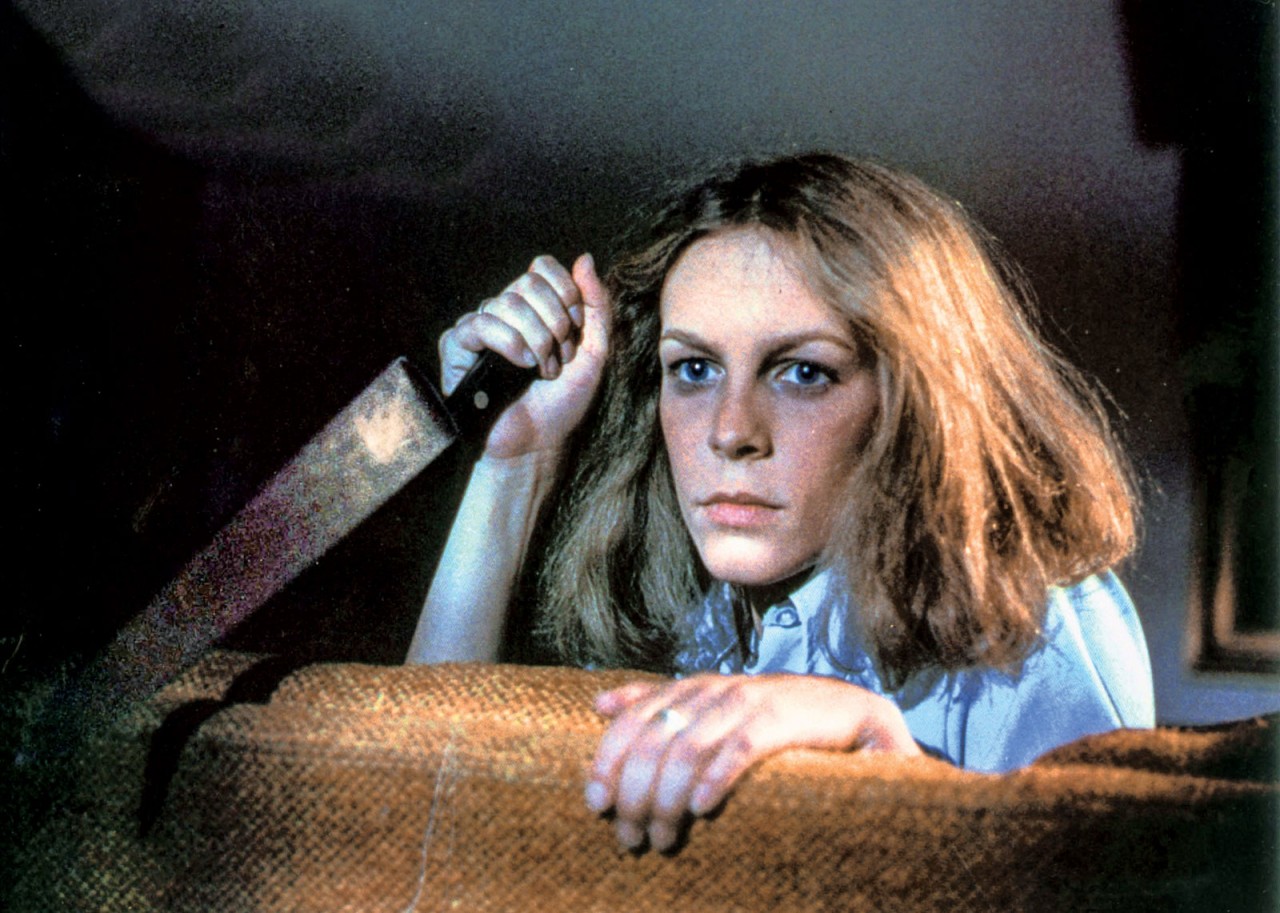 |
| Photo: Compass International |
Imdb score: 7.7/10
Halloween is John Carpenter’s most analyzed work. Spectators have drawn sundry conclusions about its meaning and symbolism since its initial release, and the obsession has lingered for decades. Horror fans and scholars alike have presented elaborate theories that assign every detail in the film a meaning according to their interpretation of its terror. Something about Michael Myers, behind the void of his expressionless white mask, allows viewers to access their deepest fears and project them upon that face. And yet, the simplicity and straightforwardness of the filmmaking, from Dean Cundey’s widescreen cinematography to the natural characterizations, from Carpenter’s memorable score to the screenplay’s efficiency, amount to a terrifically crafted motion picture. But the movie reaches beyond its confident technical execution and grabs at the audience, putting viewers through a troubled nightmare of suspense and uncertain dread. It reaches into our deepest, most primitive anxieties of the unknown and then exploits them. Halloween is a cipher that moviegoers, critics, and film scholars have filled in with countless readings, some of which will be explored in the ensuing paragraphs. What remains after the movie’s deceptive simplicity and superb form is its haunting ability to mean whatever we need it to mean, and therein retain the unfettered horror it inspires in our subconscious.
Halloween was released during an era that gave birth to some of cinema’s most interpretable films and most ambiguous endings, titles that audiences have debated and theorized about ever since their debut. The cinema of the 1970s refused to give audiences easy explanations or closure, reflecting an era still reeling from Richard Nixon’s presidency and the televised horrors of Vietnam. Just three years before Halloween, Steven Spielberg’s Jaws debuted, spurring a number of readings that linked the killer shark to Watergate, Kent State, and Vietnam. The next year, the uncertain motivations of Travis Bickle in Taxi Driver forced moviegoers to consider what might have inspired his warped fixations and ultimate violence, with theories claiming he personified racism, religious vengeance, and postwar trauma. Other titles from A Clockwork Orange (1971), The French Connection (1971), Deliverance (1972), Chinatown (1974), The Conversation (1974), The Texas Chain Saw Massacre (1974), Nashville (1975), One Flew Over the Cuckoo’s Nest (1975), The Deer Hunter (1978), Apocalypse Now (1979), and Being There (1979) robbed moviegoers of tidy solutions to complex problems. They acknowledged the failure of American political and social institutions, and they defied any assurances promised by a rational world. Halloween arrived at the end of the decade, in 1978, and embodied American uncertainty in such a way that terrified audiences, and it still maintains the capacity to terrify modern viewers.
2. Donnie Darko (2001)
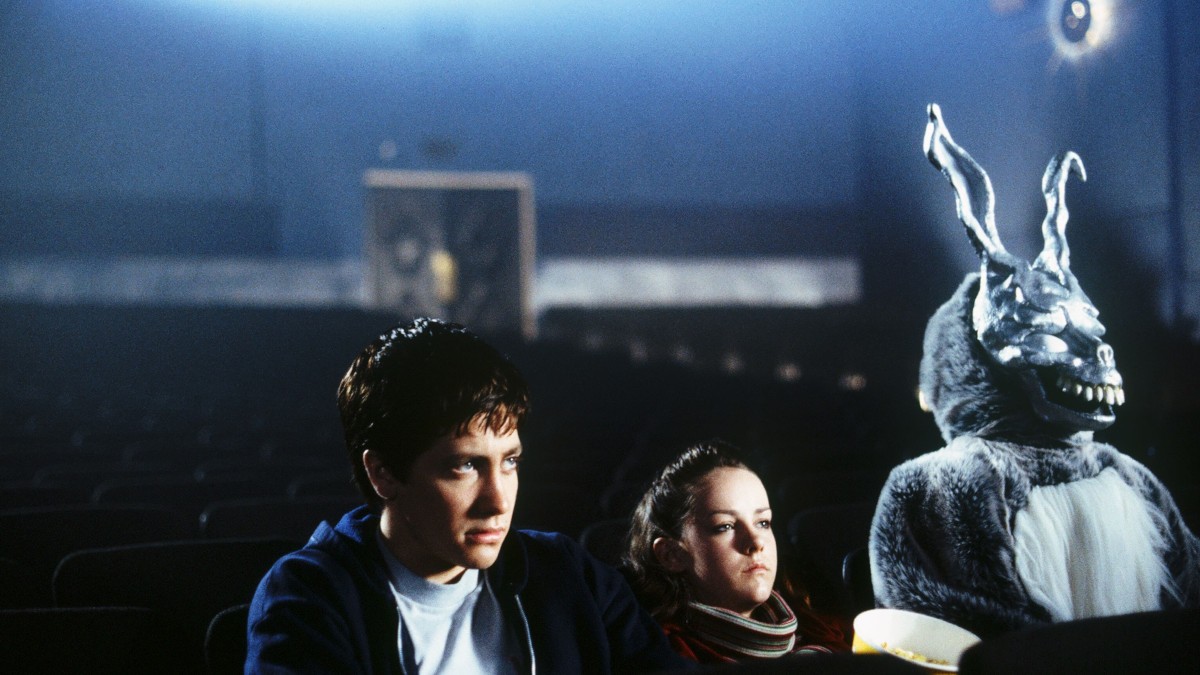 |
| Photo: Newmarket Films |
Imdb score: 8/10
The film stars Jake Gyllenhaal, from “October Sky,” as Donnie Darko, a high school student whose test scores are “intimidating,” whose pose is to be likable and sardonic at once, and who occasionally forgets to take his medication, for unspecified but possibly alarming reasons. He is seeing a psychiatrist (Katharine Ross), who uses hypnosis to discover that he has a nocturnal visitor who leads him on sleepwalking expeditions. One of these trips is fortunate, because while he's out of the house a 747 jet engine falls directly through his bedroom.
The movie is grounded solidly in a leafy suburban setting, where the neighbors gather behind police lines while a big flatbed truck hauls the engine away and the FBI questions the Darko family. There is much unexplained. For example, no airline is reporting that an engine is missing from one of its jets. Where did the engine come from? Donnie has no more idea than anyone else, and we follow him through high school days with an English teacher (Drew Barrymore) who is sympathetic, and a gym teacher who requires the class to locate imaginary experiences on a "lifeline" between Fear and Love. When Donnie suggests what the gym teacher can do with her lifeline, he and his parents are called in for a conference with the principal--and one of the movie's charms is that they are not shocked but amused.
Richard Kelly, the first-time writer-director, was obviously talented at creating a disturbing atmosphere out of the materials of real life. His mysterious jet engine is a masterstroke. He sees his characters freshly and clearly, and never reduces them to formulas. In Jake Gyllenhaal, he finds an actor able to suggest an intriguing kind of disturbance; the character is more curious than frightened, more quixotic than eccentric, and he sets a nice tone for the movie. But somehow the control fades in the closing scenes, and our hands, which have been so full, close on emptiness. “Donnie Darko” is the one that got away. But it was fun trying to land it.
3. E.T. the Extra-Terrestrial (1982)
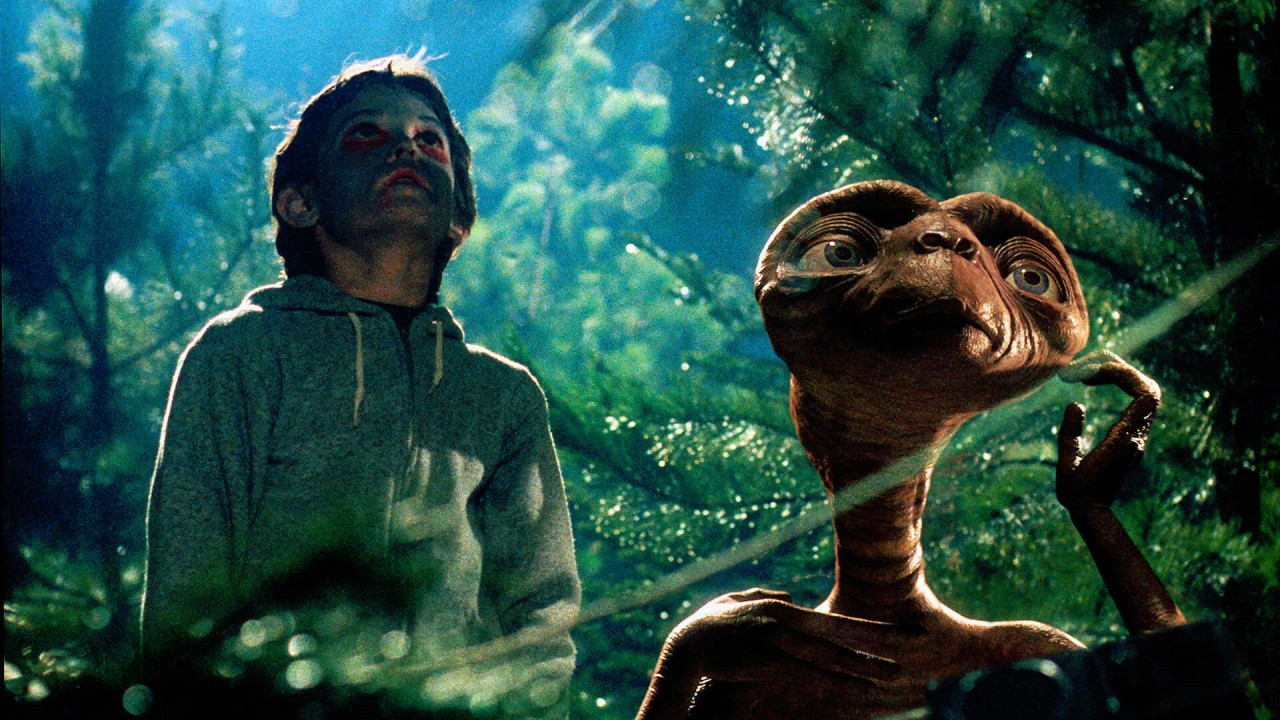 |
| Photo: Amblin Entertainment |
Imdb score: 7.8/10
A creature from another planet, visiting California on some botanical mission, is left behind by his spaceship on the outskirts of Los Angeles. He communicates by music and lights, like the visitors in Close Encounters of the Third Kind, though his vehicle is smaller, less awesome than theirs. After being pursued by menacing adults through a Disneyesque wood, he's befriended by the 10-year-old Elliott (Henry Thomas), who enlists the help of elder brother Michael and little sister Gertie.
Together, they conceal him from their mother (who's in a badly shaken state after the recent departure of her husband with another woman) and from the lurking authorities, whom they rightly suspect of having the darkest designs on this creature with a princely brain inside his frog-like head. E.T., as they name their playmate, learns to speak and they help him to contact his own planet.
In E.T. the old sentimentality embraces the new technology to disarming effect, the syrup being drained off the former and the chilly edge removed from the latter. This is a close encounter between J.M. Barrie and H.G. Wells. Even if the film hadn't signalled one of its main sources by having the children's devoted mother read to the little Gertie the scene where Captain Hook attempts to poison Peter Pan, no child of this century will need to ask for whom the Tinker Bell tolls when the audience is virtually called upon to will the dying E.T. back to life.
4. Beetlejuice
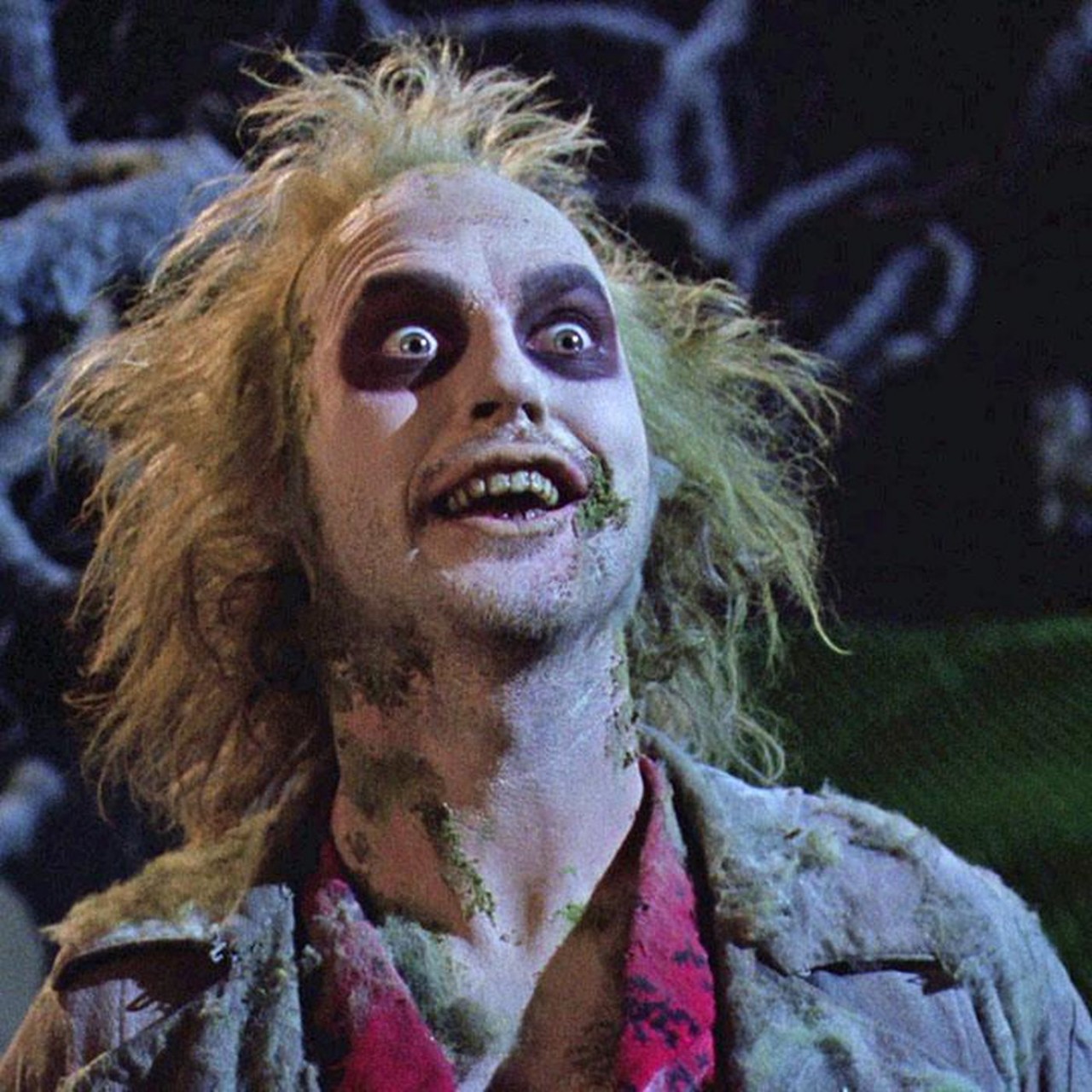 |
| Photo: Warner Bros. |
Imdb score: 7.5/10
Vibrant to the point of being garish, warm and generous, with a spiky sense of satire, this supernatural comedy is one of Tim Burton’s best. It is a time capsule of the 1980s, both in its absurd stylings and its parable of Reagan-era commodification culture. And what a cast. Alec Baldwin and Geena Davis play the Maitlands, a meek, childless couple whose contented existence is disrupted by their unfortunate deaths in a road accident. Back home, it takes them a while to realise they are dead, though the Handbook for the Recently Deceased and the surreal Technicolor hellscape outside the front door are strong clues.
The story almost comes off the rails, but Beetlejuice’s charm lies more in the execution. The movie is crammed with visual invention and snappy comedy. The afterlife is richly imagined as a macabre bureaucracy. The living world is no less outlandish, especially with those eye-popping interiors and costumes (for me, the film’s only flaw is that the house actually looks better after its remodelling). Burton was a bracing new talent with a headful of ideas here. His now-familiar Dr Seuss gothic sensibility was a novelty, and crucially, it was still tethered to the real world.
5. Scream
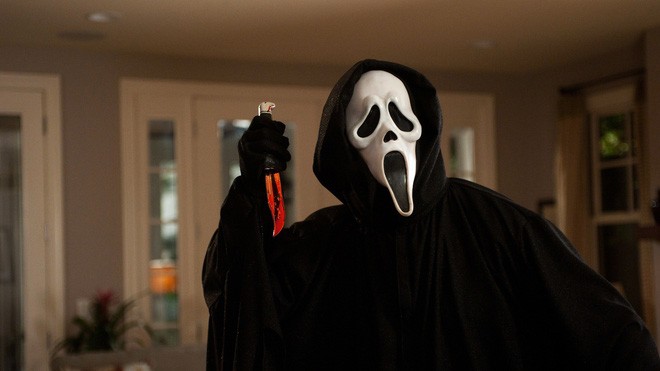 |
| Photo: Dimension Films |
Imdb score: 7.3/10
Scream sees a serial killer named Ghostface is terrorizing Woodsboro. Using horror movies quiz to psychologically torture his victims before murdering them, he (or she) is especially targeting teenagers from Woodsboro high. One of them, Sidney Prescott (Campbell) survives his attack and becomes the object of his affection. The killer focus on getting to her. Sidney knows tragedy: one year prior her mother, Maureen, was brutally murdered, and Sidney’s testimony was key to sending the suspect Cotton Weary (Liev Schreiber) to jail.
Savvy newswoman Gale Weathers (Cox) doesn’t believe Cotton is guilty and wrote a meaty book about Maureen’s murder. She goes to Woodsboro to cover the new story and instantly clashes with Sidney. She starts a flirty kinship with Dewey (Arquette) the clumsy policeman who’s very protective of Sidney. Sidney’s friends include her boyfriend Billy (Skeet Ulrich), Tatum (Rose McGowan), Stuart (Matthew Lilard) and Randy (Jamie Kennedy) who works in the video store and knows everything there is to know about horror movies. During a party at a friend’s house, Ghostface strikes the group, killing a lot of Sidney’s friends and finally revealing himself and his hidden motives to attack.
The greatness of Scream relied in three main aspects: first, the script, which had the right amount of flavor to it. The story is totally addictive, the dialogue is spot on, filled with hilarious and very smart references to pop culture; second, the cast, which was golden. Campbell, Cox, and Arquette anchored the film perfectly well, with Arquette having the time of his life playing the clumsy Dewey.
Scream also featured quite a few special appearances as Linda Blair and Robert Englund. From the main cast the only actor who misses the mark by a long mile is Matthew Lilard as Stuart, overacting to the extreme, in a way that gets very irritating by the last third of the film; and third, that opening sequence with Drew Barrymore. It’s such a perfect moment of tension and horror it almost weakens the film that comes after, since nothing would ever come being that good.
6. Get Out
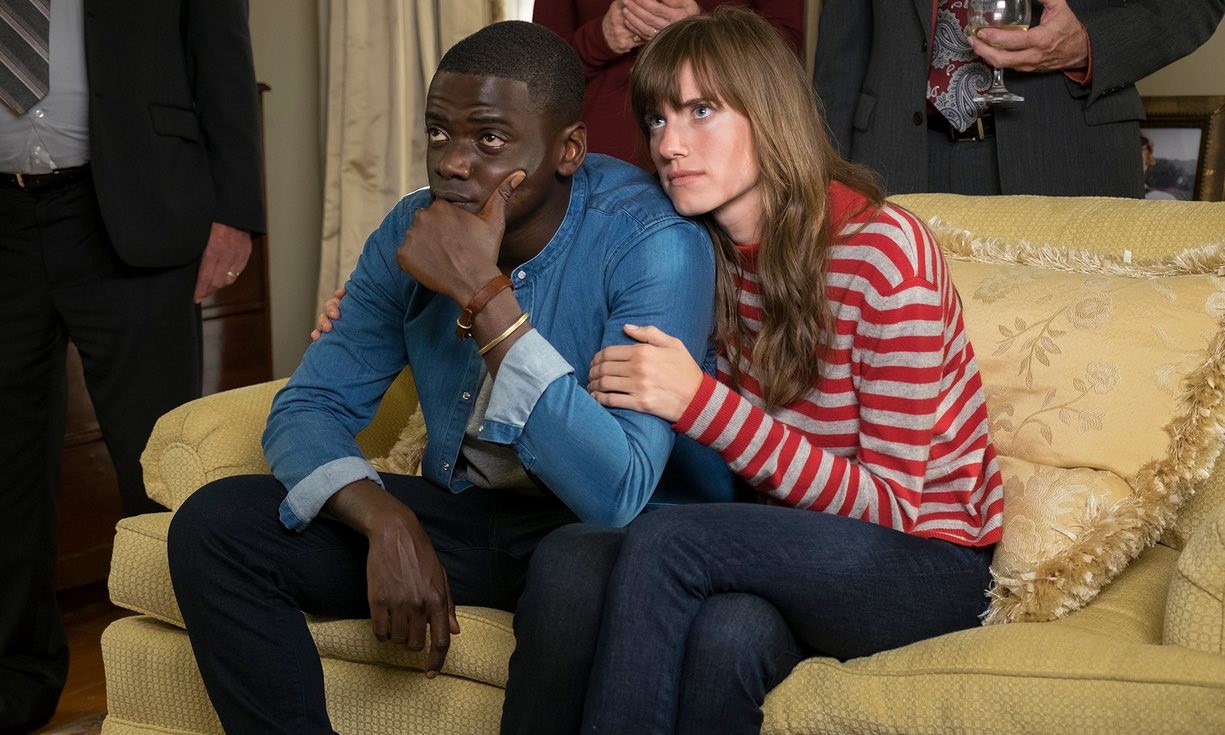 |
| Photo: Universal Pictures |
Imdb score: 7.7/10
“Don’t go to a white girl’s parents’ house!” warns LilRey Howery’s lovable transport security administration officer Rod, conspiracy theorist and best friend to handsome, intelligent Chris (versatile British actor Daniel Kaluuya). “Do they know I’m black?” Chris asks his girlfriend, Rose (Allison Williams), as the couple prepare for a “meet the folks” weekend in her rural family home. “Should they?” she replies, assuring Chris that her neurosurgeon father would have voted for Obama a third time if he could, a claim he duly repeats on cue. “I hate the way it looks,” blushes patriarch Dean (Bradley Whitford), showing Chris around the Armitage estate (“white family, black servants, total cliche”), where groundsman Walter (Marcus Henderson) and housekeeper Georgina (Betty Gabriel) smile like supporting players in Gone With the Wind. Meanwhile Rose’s mum, Missy (a superbly nuanced turn from Catherine Keener), promises to cure Chris of his smoking habit through a single bout of hypnotherapy, triggered by the chiming of a spoon in a teacup.
Sharply written by Peele (who teamed up with Keegan-Michael Key, his co-star in hit US sketch series Key & Peele, for last year’s patchy feline action spoof Keanu), Get Out is at its best when hinting at horrors hidden beneath the genteel facade. From the toe-curling “my man!” chumminess of Dean to the blank stares of the domestic staff and the barely suppressed violence of Rose’s “douche bag” brother Jeremy (Caleb Landry Jones), the Armitage home leaves us unsure whether to laugh, cry or scream. A night-time sequence, in which Walter runs out of the darkness towards Chris, has the same sense of American gothic dread as David Robert Mitchell’s It Follows, while the humour vacillates between the broader strokes of Rusty Cundieff’s underrated Tales from the Hood and the insidious cruelty of Lars von Trier’s Manderlay.
Inevitably, the thematic rewards lessen somewhat as suspense turns to revelation, but Peele knows how to orchestrate an arresting set piece, and doesn’t skimp on cathartic spectacle in the third act. There’s a crowd-pleasing logic at work here even as credibility wobbles (an issue with which Levin wrestled repeatedly), and you’ll be too busy digging your nails into the arms of your seat to worry about distracting implausibilities. Crucially, the ensemble cast keep the energy levels high enough to prevent disengagement – to stop us from snapping out of the film’s hypnotic spell.
7. Ghostbusters
 |
| Photo: Den of Geek |
Imdb score: 7.8/10
Ghostbusters is a 1984 American supernatural comedy film directed and produced by Ivan Reitman and written by Dan Aykroyd and Harold Ramis. It stars Bill Murray, Aykroyd, and Ramis as Peter Venkman, Ray Stantz, and Egon Spengler, respectively, a trio of eccentric parapsychologists who start a ghost-catching business in New York City. The film also stars Sigourney Weaver and Rick Moranis, and features Annie Potts, William Atherton, and Ernie Hudson in supporting roles.
Based on his own fascination with spirituality, Aykroyd conceived Ghostbusters as a project starring himself and John Belushi, in which they would adventure through time and space battling supernatural threats. Following Belushi's death in 1982, and with Aykroyd's concept deemed financially impractical, Ramis was hired to help rewrite the script to set it in New York City and make it more realistic. Ghostbusters was the first comedy film to employ expensive special effects, and Columbia Pictures was concerned about its relatively high $25–30 million budget and had little faith in its box office potential. Filming took place from October 1983 to January 1984, in New York City and Los Angeles. Due to competition for special effects studios among various films in development at the time, Richard Edlund used part of the budget to found Boss Film Studios, which used a combination of practical effects, miniatures, and puppets to deliver the ghoulish visuals.
8. The Shining
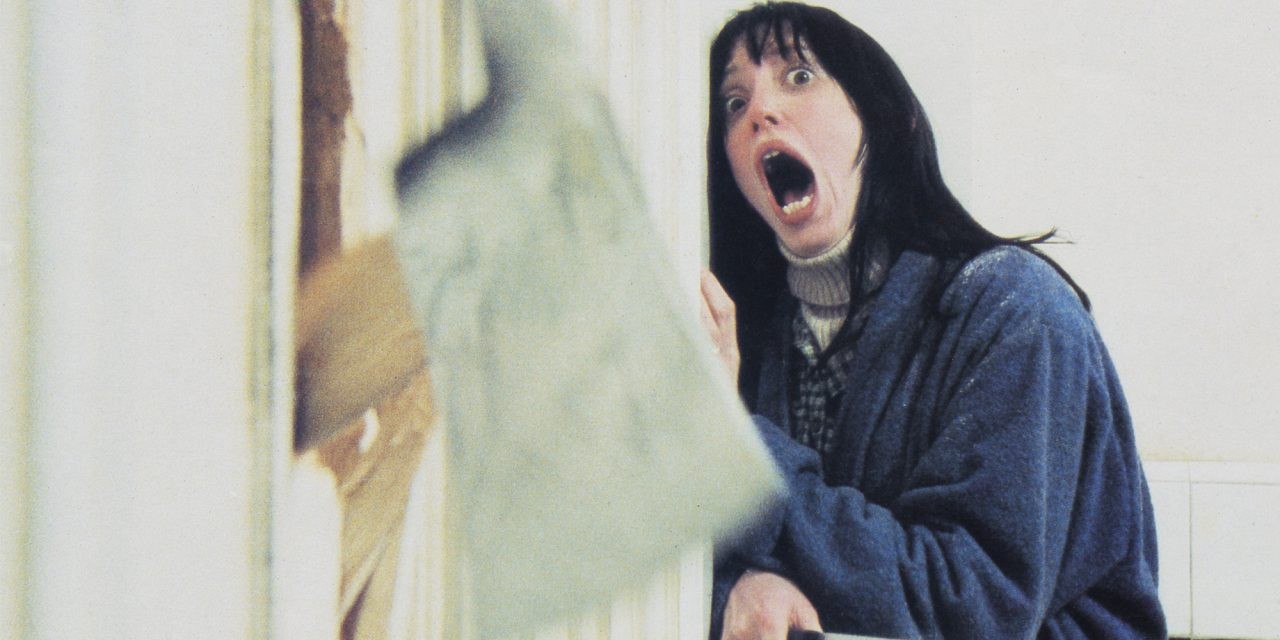 |
| Photo: Warner Bros. |
Imdb score: 8.4/10
Those who have read Stephen King's original novel report that Kubrick dumped many plot elements and adapted the rest to his uses. Kubrick is telling a story with ghosts (the two girls, the former caretaker and a bartender), but it isn't a "ghost story," because the ghosts may not be present in any sense at all except as visions experienced by Jack or Danny.
The movie is not about ghosts but about madness and the energies it sets loose in an isolated situation primed to magnify them. Jack is an alcoholic and child abuser who has reportedly not had a drink for five months but is anything but a "recovering alcoholic." When he imagines he drinks with the imaginary bartender, he is as drunk as if he were really drinking, and the imaginary booze triggers all his alcoholic demons, including an erotic vision that turns into a nightmare. We believe Hallorann when he senses Danny has psychic powers, but it's clear Danny is not their master; as he picks up his father's madness and the story of the murdered girls, he conflates it into his fears of another attack by Jack. Wendy, who is terrified by her enraged husband, perhaps also receives versions of this psychic output. They all lose reality together. Yes, there are events we believe: Jack's manuscript, Jack locked in the food storage room, Jack escaping, and the famous "Here's Johnny!" as he hatchets his way through the door. But there is no way, within the film, to be sure with any confidence exactly what happens, or precisely how, or really why.
9. It
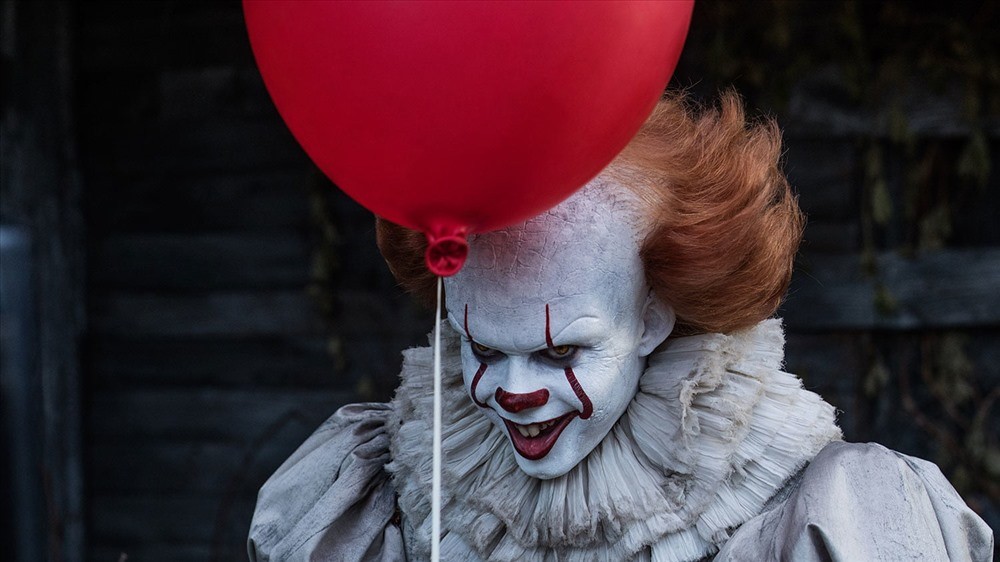 |
| Photo: Warner Bros. |
Imdb score: 7.3/10
Clowns are creepy no matter what. We can all agree on that, right?
But Pennywise, the dancing clown who tracks down and torments the children of small-town Maine in “It,” is deeply unsettling. At least, he is in the latest incarnation of Stephen King’s iconic novel. Infamously, Tim Curry’s take on the character in the 1990 TV miniseries version was so over-the-top, it was laughable—not that you’re looking for understatement in your homicidal clowns.
But what Bill Skarsgard does with the role works well precisely because he doesn’t appear to be laboring so hard to frighten us. He doesn’t vamp it up. He’s coy—he toys with these kids—making his sudden bursts of insane clown hostility that much more shocking.
Even more effective than the horror elements of Argentine director Andy Muschietti’s adaptation is the unexpected humor he reveals in the story—and, ultimately, the humanity. Finding that combination of tones is such a tricky balance to pull off: the brief lightening of a tense moment with a quick quip, or an earnest monologue in the face of extreme danger. But “It” makes that work nearly every time, thanks to its perfectly calibrated performances from a well-chosen cast.
Despite the many terrifying moments they endure in their quest—scenes that will leave you trembling and giggling at once—“It” is even more powerful in the warm, easy camaraderie between its young stars. Certainly you could view it as a straight-up horror flick, but the underlying allegory of these characters facing their deepest fears as they enter adulthood gives the movie more emotional heft—a bit of bittersweet within the suffering.
10. Hereditary
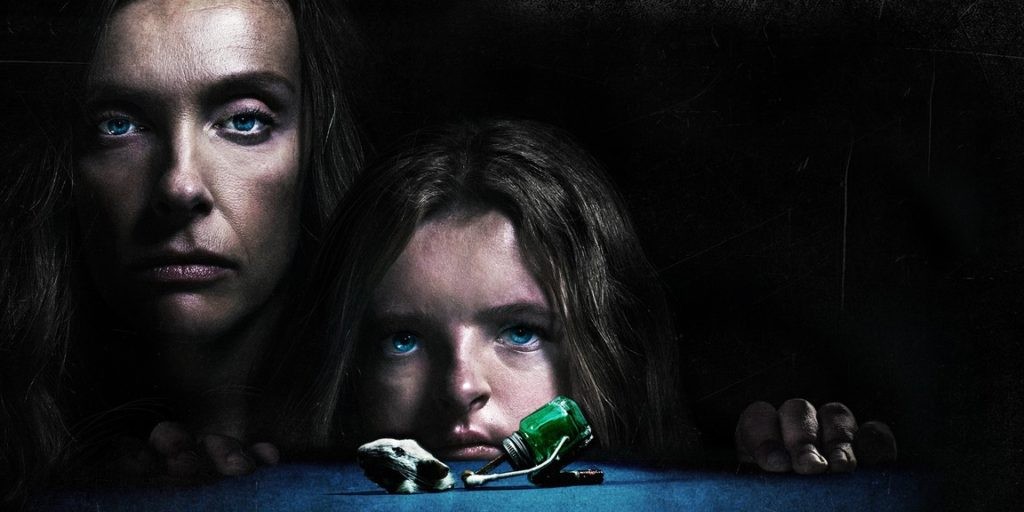 |
| Photo: A24 |
Imdb score: 7.3/10
Creepy beyond belief, "Hereditary" is one of those movies you shouldn't describe in detail, because if you do, it will not only ruin surprises but make the listener wonder if you saw the film or dreamed it. The movie sustains a throb of dread throughout its first 90 minutes, and its final 30 are off-the-rails in the best way. Writer/director Ari Aster structures the tale so that it’s hard to be sure if the uncanny events you're seeing are real or figments of the imaginations of the Graham family, a clan cursed both by Biblical bad luck and a genetic disposition towards various types of mental illness.
Film literate in the extreme, "Hereditary" seems inspired by a wide array of classic sources both inside and outside of the horror genre. "Rosemary's Baby," "The Exorcist," "The Amityville Horror" and "The Texas Chainsaw Massacre” loom large, as do Asian horror touchstones like "The Grudge" and "The Eye."
But the film owes just as much to the intense family psychodramas of Mike Leigh and John Cassavetes, which place strong-willed but deeply damaged people in close proximity and look on as they suffer barely-concealed torment from sitting on their rage, then finally lash out in displays of emotional violence that are as intense, in their own way, as the bloodletting and surrealism. Unspeakable things happen to the family throughout. Every time they experience new trauma, it cracks their controlling facades a bit more, exposes emotional fissures in the family as a whole, and makes you wonder if perhaps the social institutions surrounding us and the intricate practices of language, science, and literature aren't just elaborate means of holding back fear of death and random misfortune.
 | Top 10 Halloween Specials To Watch With Your Kids Halloween is coming, and what is better than bing watching a good cartoon with your kids. This 10 new Halloween specials, special episodes, and series ... |
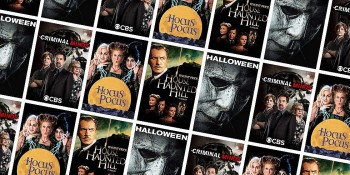 | Halloween Movies to Watch for a Scary Evening In Whether you're into horror films or comedies, there's something for everyone on this list of best Halloween movies. |
 | 10 Best Movies To Watch on Amazon Prime Video on October 2021 Tired of a boring weekend with nothing to do? We round up for you a list of 10 best movies that are available for streaming ... |
Recommended
 Handbook
Handbook
Vietnam Moves Up 8 Places In World Happiness Index
 Handbook
Handbook
Travelling Vietnam Through French Artist's Children Book
 Multimedia
Multimedia
Vietnamese Turmeric Fish among Best Asian Dishes: TasteAtlas
 Handbook
Handbook
From Lost to Found: German Tourist Thanks Vietnamese Police for Returning His Bag
Popular article
 Handbook
Handbook
Prediction and Resolution for the Disasters of Humanity
 Handbook
Handbook
16 French Films To Be Shown For Free During Tet Holiday In Vietnam
 Handbook
Handbook
Unique Cultural and Religious Activities to Welcome Year of the Snake
 Handbook
Handbook




